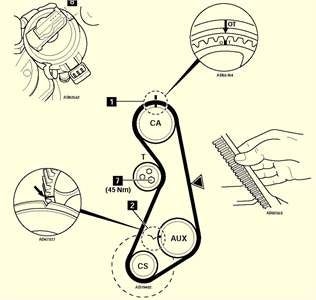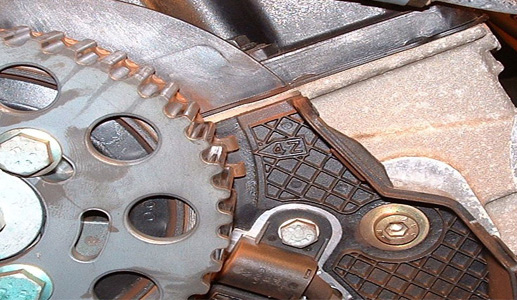

During the process, the camshaft rotates once, and the crankshaft rotates twice. Timing chain or belt - similarities and differencesĪutomotive internal combustion engines use four clock cycles to complete the combustion process (shock, compression, fuel and exhaust). Timing belt - Like the timing chain, it is a component of an automobile engine that acts as a transmission to drive the camshaft at half speed and in sync with the crankshaft. The timing chain may be single, double or triple depending on what model of car you are talking about. The design of the timing chain allows it to be connected to various gears and wheels. The timing chain transmits the movement crankshaft distributive rampart and consists of many metal links like a bicycle chain. Valve train chain is to do the engine of the car, which is in engine car and synchronizes its various parts so that they can work in sync. Boris Zhmud, Head of R&D, BIZOL Lubricants, is a timing chain and what is a timing belt? The issue has become so severe that OEMs were forced to initiate joint task-force development of a dedicated timing chain wear (TCW) test that is to be included in the forthcoming ILSAC GF-6 performance specifications for passenger car motor oils.Ĭourtesy of Prof. Research carried out by BIZOL reveals that excessive ZDDP levels might actually accelerate the timing chain wear. Without conducting proper research and testing, some lubricant companies were quick to launch aftermarket additive packages that contained zinc dithiophosphate (ZDDP), which only further elevated the problem.


The issue has gained a lot of publicity as it relates to frequent failures of 1.2L and 1.4L VW TSI engines. Wear is another serious problem plaguing timing chains, especially in T-GDI engines. Very often, using an out-of-spec motor oil, such as one with a lower viscosity than what is recommended by the vehicle manufacturer, will cause low oil pressure. One might expect that low oil pressure indicates a problem with the oil pump, but that is not necessarily the case. If the engine oil pressure becomes low, the mechanical engine timing will be affected, which is not good for the engine. So, it is very important that the oil’s properties remain constant - or “stay in grade” - during the service life. However, timing chain tensioners, in contrast to timing belts, are nearly always controlled with the engine oil pressure. However, many modern engines use timing chains, which reside inside the engine and are not generally considered serviceable parts.īoth timing belts and timing chains use tensioners that keep them from moving around.

Most vehicle manufacturers recommend that timing belts be changed every 60,000 to 100,000 miles, or after 8 to 12 years. This is exactly what happens when a timing chain or timing belt breaks.įor old-school engines using a timing belt, the easiest way of preventing such failures is to replace the belt at regular intervals as part of the scheduled service maintenance. Without the proper timing of these parts, the engine will suffer a catastrophic failure. The intake and exhaust valves have to open at a very precise time in relation to the piston position (cranking angle). The proper synchronization of the camshaft and crankshaft motion is crucial for controlling the movement of the valves and pistons inside the engine. Alternative solutions may include using a gear drive for the camshafts, as is the case with VW V10 TDI engines. Camshafts are usually linked to the crankshaft via a timing belt or a timing chain. In a four-stroke internal combustion engine, camshafts rotate at half the speed of the crankshaft.


 0 kommentar(er)
0 kommentar(er)
